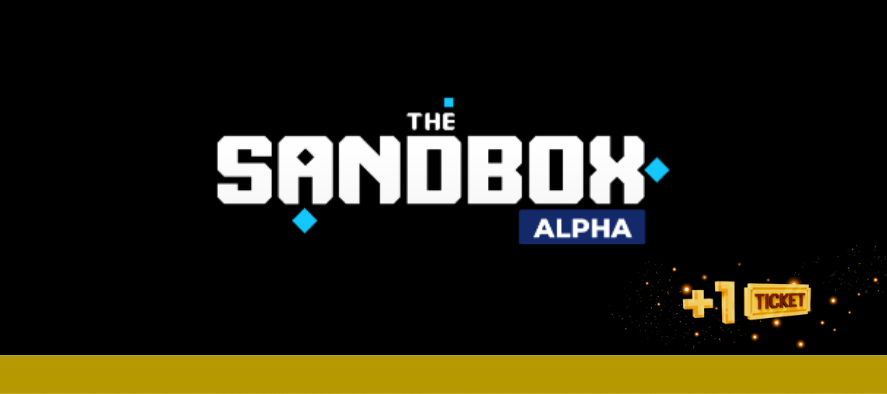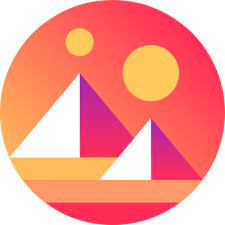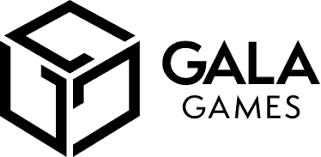Last Updated on April 17, 2024 by Ben
Best Places to Buy The Sandbox (SAND)
The gaming industry is constantly evolving. What was once a pastime for children has now become an activity that many adults are engaged in. This shift has given rise to new platforms that allow players to monetize their experience, including Sandbox (SAND).
What is the Sandbox (SAND)? Your Ultimate Guide
Sandbox is a virtual world where players may buy and sell digital items created on the Ethereum network. Sandbox users can use the platform’s utility token, SAND, to monetize their gaming experiences. This platform was built by gamers for other gamers and offered security and transparency while also providing an opportunity for advancement and success.
What Is The Sandbox (SAND)?
The Sandbox is a blockchain-based virtual world developed by Pixowl in 2011. Users may create, build, buy, and sell digital assets as part of a game within the Sandbox. The Sandbox produced a decentralized platform for a thriving gaming community using decentralized autonomous organizations (DAO) and non-fungible tokens (NFTs).
According to the official white paper, the main objective of the Sandbox platform is to successfully integrate blockchain technology into popular gaming. The platform pushes for a creative “play-to-earn” model that allows consumers to create and enjoy the content. By leveraging blockchain technologies, the Sandbox provides the SAND utility token, which may be used to conduct transactions on the platform.
Who Are the Founders of The Sandbox?
Arthur Madrid is the CEO and co-founder of Pixowl. He also helped create The Sandbox. Arthur graduated with a degree in economics from Université Paris Dauphine in 2000. His professional career began as a consultant for Eurogroup Consulting France, but he became an entrepreneur when he founded 1-Click Media, which was later bought by Ipercast.
Sebastien Barget is also a co-founder of Pixowl and serves as the company’s COO. He received a bachelor’s degree in computer systems networking and telecommunications from Institut national des Télécommunications in 2007. Arthur Madrid and Sebastien Borget have been on an entrepreneurial team since his professional career began as a project leader for 1-Click Media in 2008. They launched Pixowl in 2011, and they’ve been working on projects together ever since.
History of The Sandbox
The idea of sandbox gameplay implies more or less undirected free play, as we all know. The motif is a youngster playing in a sandbox, where he or she creates a universe out of the sand and the most basic of components. In contrast, game material at a higher level is completely finished and organized.
In the interludes between, several trends in free-play emerged as the most popular of which was the city-building game. It all began with Utopia in 1982, but when it stopped being strategic/competitive and became an exercise in “free” construction for the sake of building, the city-building genre blossomed.
The creation of game worlds is something that all game designers enjoy, and the genre grew out of this inherent love for building game universes. SimCity was designed by Will Wright, one of the game’s creators, as a means to express his joy and understanding as soon as possible. Sim City’s release led to record-breaking success, establishing one of the 1990s’ major genres, which prompted this insight.
Free play can be added in various ways to economic simulation, as seen with the Tycoon games, beginning with Railroad Tycoon (1990). The next decade saw the addition of more-or-less competitive and goal-oriented games, including SimIsle and Capitalism. The ability of users to create their own games was widely praised in current user-generated content games like Second Life, LittleBigPlanet, and Spore.
In the 1990s, several studies were conducted to determine what gameplay structures and presentation/interface systems enhance attachment and what utilizes a player’s instinct and desire to connect in an apparently meaningful way with the artificial character. In doing so, they bring the player into the virtual world and entangle him, thereby providing “physical” contact (mousing), sharing “space” (e.g., players and characters may control the same on-screen items), and so on.
The major advantage of creating lifelike people for sandbox gaming is that they are more active and interactive. They help to “sell” the game environment by making it appear more realistic. They’re not “realistic” in the sense that they’ll ever achieve the Turing test, but they’re realistic enough to distract you from their artificiality. The more clever the NPCs converse, the more it appears like the game is set in a free and open society.
How Does The Sandbox Work?
The Sandbox platform uses the Ethereum blockchain to keep track of ownership of digital LAND and NFT ASSETS on its app. Users can interact with the ecosystem through Ethereum wallets that store their SAND tokens.
Developers are also free to experiment with Sandbox’s platform by creating the animation and interactions that will be experienced on their virtual property using a variety of tools.
VoxEdit
VoxEdit is a free 3D voxel modeling and NFT creation software for PC/Mac that allows you to construct and animate virtual goods, such as humans, animals, automobiles, plants, tools, and products. Voxels, which are three-dimensional pixels that resemble building blocks, may be modified with VoxEdit to produce stunning outcomes quickly.
Once they’re finished, you may export VoxEdit’s virtual goods to The Sandbox marketplace and convert them into NFT GAME ASSETS.
Game Maker
The Sandbox Game Maker enables anybody to create fantastic 3D games without any prior programming experience. Thanks to easy-to-use visual scripting tools, users may quickly produce beautiful 3D games in minutes. Creators like you contribute to a vast metaverse brimming with fascinating interactive creations and adventures.
Marketplace
Users can upload, publish, and sell their Voxedit NFT creations on Sandbox’s NFT marketplace. Creations are first uploaded to an IPFS network for decentralized storage and then registered on the blockchain to authenticate ownership.
Then, when the objective is completed, things become ASSETS that may be sold by making a first sale offer on the marketplace for anybody interested in purchasing them.
Sandbox Tokens
SAND
SAND is the innate token of The Sandbox, which allows transactions within the game. It’s an ERC-20 cryptocurrency with a total supply of 3 billion tokens and a usage purpose:
- To begin with, it allows players to purchase and sell the game’s various assets. A user can use SAND tokens to play mini-games within The Sandbox, buy equipment, and enhance their characters, for example.
- SAND holders can obtain benefits for saving them thanks to the staking of this token.
- Through the DAO that manages various elements of the game, SAND token holders may engage in on-chain governance of the game.
- The SAND coins can be earned and used to purchase LAND, allowing users to expand their territories.
ASSETS
ASSET is an ERC-1155 token that serves as the game’s virtual currency and represents the various voxels or components within the game. To put it another way, a voxel is any component or entity with which you can interact in the game. It might be a gadget you put on your avatar or simply a digital pet within the game.
However, the ASSETS are divided into categories, including:
- The entity, which is used to identify any design element within the game. For example, a tree is an ASSETS, and an ERC-1155 smart contract associated with its characteristics is attached.
- Equipment, which serves to identify anything that you can incorporate into your avatar. For example, a sword for your samurai avatar or armor with Bitcoin logos for your feudal warrior.
- Block allows you to create spaces and is basic to build your own world within the game.
Users may create ASSETS using the VoxEdit software, which allows users to build their own unique ASSETS and submit them to the Market.
The Market allows creators to profit from the sale of their ASSETS by selling SAND in exchange for cash. In any case, this system’s restriction is your own imagination, which gives these tokens a lot of influence within the game
LAND
The LAND token is one of the game’s fundamental assets, an ERC-721 token that serves to define the ownership of a piece of land within the game. When you obtain a LAND token, you’re acquiring a large amount of property in the game, represented on the Ethereum network digitally. Land lots are a very rare commodity at The Sandbox. In fact, there will only be 166.464 LANDs, which makes them a precious commodity.
There are, however, two things to be aware of with LAND:
- The game’s first thing to consider is that a LAND token is made up of 96 × 96 meters
- You can combine them since a player may acquire an ESTATE from several LANDs at the same time.
Furthermore, players may use LAND tokens in The Sandbox to:
- Play the games within the metaverse.
- You can design spaces that other players may use. You might, for example, buy a LAND and turn it into whatever you like. Other users will be able to access it with a minor charge for access if you own a LAND.
Finally, the last alternative demonstrates that we have a great opportunity to monetize the LAND because it will enable their owners to establish locations that may be rented by other people or exchanged when the price of the tokens rises.
What makes The Sandbox unique?
The Sandbox is a one-of-a-kind platform because it is the first of its kind to bring blockchain technology to the world of gaming. When it comes to using blockchain technology, the gaming industry has a significant untapped market. In 2011, Pixowl recognized this fact. The Sandbox aspires to revolutionize the market by providing a setting for players to construct and save blockchain-based assets. It establishes itself as a specialized service in the worldwide gaming industry.
The Sandbox focuses on user-generated content, creating a metaverse of active players who help to advance the platform. Not only that, the Sandbox encourages decentralized decision-making and allows users to contribute their thoughts and ideas about the project’s progress. Decentralized governance is becoming increasingly important in blockchain-based projects as a result of technological advancements.
The company immediately gained a lot of attention and support from many prominent names in the gaming sector, including Atari, Helix, and CryptoKitties.
Pros and Cons of Sandbox
Sandbox has some distinct advantages over comparable platforms. For one thing, this decentralized platform allows users to easily exchange and purchase things in the metaverse. It also ensures that all gamers and collectors have secure ownership. Furthermore, everyone who holds tokens may take part in the platform’s governance. Sandbox has an Ask Me Anything (AMA) mechanism in place to inform the community. Finally, on Sandbox, creators are constantly engaged with their audiences on social media.
Sandbox, like any other gaming platform, has some drawbacks. Cyberattacks, data theft, and other malicious interferences are all possible on any virtual reality system. Sandbox is no exception. The project’s ecosystem may also be affected by government legislation. Above all, the initiative may be outsourced to third parties, which implies the possibility of failure.
What exchange is Sandbox on?
Traders can buy or sell Sandbox (SAND) on top crypto exchanges such as Binance, Crypto.com, Kraken, Uniswap, and FTX.
Alternatives
Decentraland




Star Rating
The Ethereum blockchain is the foundation of Decentraland, a decentralized virtual reality (VR) environment. You can purchase land, develop it, and make money off of it in this virtual world. You may also immerse yourself in applications and content developed by other users. The decentralized nature of Decentraland sets it apart from other virtual reality projects. Users have complete control, and transparency is encouraged by the use of the Ethereum blockchain, which powers land and in-game currency.
LAND tokens are used to establish and manage real estate parcels in the Decentraland app.
The platform is based on the Ethereum blockchain and uses smart contracts to track who owns which bits of digital real estate. To participate in its ecosystem, you must hold MANA tokens within an Ethereum wallet.
Developers are also able to develop their own virtual real estate and animations, as well as user interactions, on the Decentraland platform.
Axie Infinity (AXS)




Star Rating
Axie Infinity is a blockchain-based trading and battling game that is controlled and maintained by its players.
Axie Infinity is a collectible card game where players can capture, breed, raise, battle, and trade token-based creatures called Axies. It was inspired by popular games such as Pokémon and Tamagotchi.
There are more than 500 distinct body parts available in the game, including aquatic, beast, bird, insect, plant, and reptile components. Axies grow in rarity from common to legendary, with four types of body parts and each part being divided into three categories: uncommon, rare, and ultra-rare.
Each Axie has six distinct body parts, each of which is capable of executing a unique battle move. This creates an endless number of possibilities among Axies, with the majority having mediocre statistics and a few having excellent ones.
Unlike other blockchain-based battling and breeding games, Axies may only be bred a total of seven times in Pokémon Duel to help manage the number of creatures.
Related Articles:
- Why Trade Bitcoin In An IRA?
- Cryptocurrency Ira Alternatives Companies
- What are the Benefits of IOTA?
- NEO Fees and Costs
Recommended Services:
Gala



Star Rating
Cardano is a new kind of blockchain. It has been all over for over a year now. People are using it more and more all the time, even though it is only one year old. Cardano has become one of the major blockchains in the world in just a short time. Cardano and Ethereum are both blockchains, but Cardano is better. It is compared with Ethereum a lot. One competitor to Cardano is Hedera Hashgraph (HBAR). They are becoming a real threat to Cardano, even more of a threat than Ethereum.
Hedera Hashgraph is a type of blockchain that is similar to Ethereum. It has all the same abilities as Ethereum, but it is different in some ways. Hedera Hashgraph creates a new and improved system called Hashgraph. A Hashgraph is different from a blockchain. Both of them use a special type of technology, but the Hashgraph is better in some ways. It has more speed, more security and it does not use a lot of power to work. New technology is out there called hashgraph. It is like blockchain, and only Hedera can use it.
Hedera is a cryptocurrency with tokens you can buy and sell. The price varies, but it is not as high as other cryptocurrencies, and it might get higher. It is different from another type of cryptocurrency, Ada, because Ada has already grown big and will not likely grow anymore or be adopted by many people. In the world of blockchain, Cardano has a lot of transactions that it can process. But Hashgraph can do way more. It can do half a million transactions per second.
Conclusion
Sandbox has the potential to be one of the most promising blockchain-based virtual reality projects. Its platform will allow you to have a fun game experience while also combining the benefits of blockchain technology, decentralized finance, and NFTs creation in a single digital ecosystem. This is just scratching the surface with what this project can offer us all!



